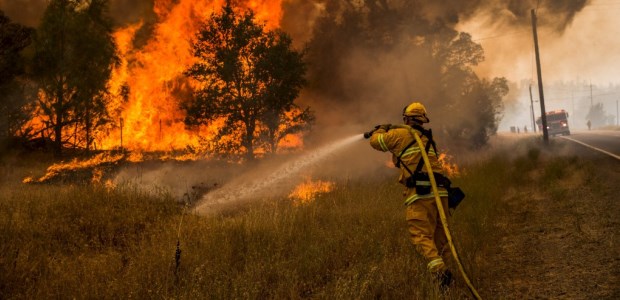
USDA Chief Praises Wildfire Funding Fix
Until the funding solution was achieved, the fire suppression portion of the Forest Service budget was funded at a rolling 10-year average of appropriations, while the overall USFS budget remained relatively flat. Because fire seasons are longer and conditions are worse, the 10-year rolling fire suppression budget average kept rising, consuming a larger percentage of the total Forest Service's budget each year and forcing the agency to take funds from prevention programs to cover fire suppression costs.
U.S. Secretary of Agriculture Sonny Perdue praised Congress for including a fix for how the U.S. Forest Service is funding for fighting wildfires, in the $1.3 trillion federal spending bill that President Donald J. Trump signed into law last week. Perdue said he had sought the change since taking office in April 2017.
"The fire funding fix, which has been sought for decades, is an important inclusion in the omnibus spending bill, and I commend Congress for addressing the issue," he said. "Improving the way we fund wildfire suppression will help us better manage our forests. If we ensure that we have adequate resources for forest management, we can mitigate the frequency of wildfires and severity of future fire seasons. I thank congressional leaders, with whom I've frequently discussed this issue."
The solution provides a new funding structure from FY2020 through FY2027. As USDA explained it, starting in FY2020, $2.25 billion of new budget authority is available to USDA and the Department of the Interior. The budget authority increases by $100 million each year, ending at $2.95 billion in new budget authority by FY2027. For the duration of the eight-year fix, the fire suppression account will be funded at the FY 2015 President's Budget request, which is $1.011 billion. If funding in the cap is used, the secretary of Agriculture must submit a report to Congress documenting aspects of fire season, such as decision-making and cost drivers, that caused the expenditures.
USDA said the omnibus bill also includes seven important forest management reforms, including:
- Categorical Exclusion for Wildfire Resilience Projects
- Healthy Forest Restoration Act inclusion of Fire and Fuel Breaks
- 20-year Stewardship contracts
- Fire Hazard Mapping Initiative
- Fuels Management for Protection of Electric Transmission Lines
Until the funding solution was achieved, the fire suppression portion of the Forest Service budget was funded at a rolling 10-year average of appropriations, while the overall USFS budget remained relatively flat. Because fire seasons are longer and conditions are worse, the 10-year rolling fire suppression budget average kept rising, consuming a larger percentage of the total Forest Service's budget each year and forcing the agency to take funds from prevention programs to cover fire suppression costs.
According to USDA, wildland fire suppression costs in 2017 topped $2.5 billion, making it the most expensive year on record.